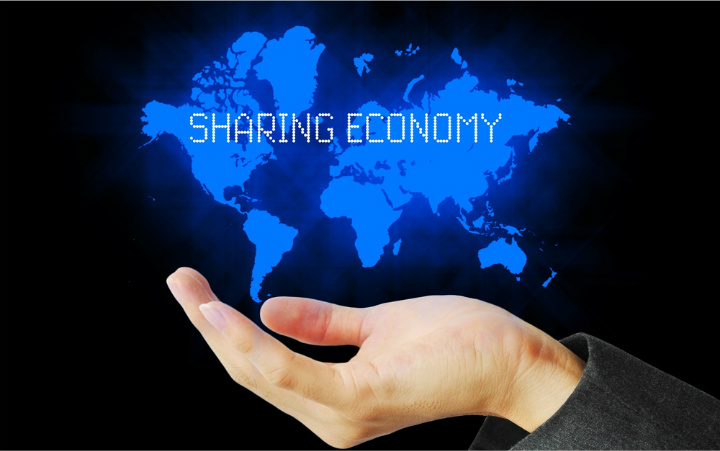 From tracking devices that inspire people to get up and move to goggles that add a digital overlay to the material world, electronics are becoming inseparable from our everyday lives. The data revolution is in full swing, and companies now have access to an unprecedented amount of information about our activities. But for this technology to truly enhance our lives, the data revolution must coincide with a user experience revolution. Our electronics no longer separate us from the physical world; in fact, they can contribute to and reshape our experience of it. However, many companies lack the imagination to take advantage of this opportunity. They glean data only to optimize marketing and operations, and in doing so, they miss out on a chance to play an integral role in improving users’ lives and strengthening their own relationships with consumers.
From tracking devices that inspire people to get up and move to goggles that add a digital overlay to the material world, electronics are becoming inseparable from our everyday lives. The data revolution is in full swing, and companies now have access to an unprecedented amount of information about our activities. But for this technology to truly enhance our lives, the data revolution must coincide with a user experience revolution. Our electronics no longer separate us from the physical world; in fact, they can contribute to and reshape our experience of it. However, many companies lack the imagination to take advantage of this opportunity. They glean data only to optimize marketing and operations, and in doing so, they miss out on a chance to play an integral role in improving users’ lives and strengthening their own relationships with consumers.
Data Should Be a Two-Way Street
Data should be a two-way conversation, not a mining operation. Consider fitness trackers like the Jawbone UP. They not only monitor how you sleep, where you go, and how many steps it takes to get there, but they also use this information to alter your behavior, suggesting ways to sleep better or exercise more. These trackers aren’t just digital logbooks, however. By turning data into an interaction with users, Jawbone and Fitbit serve as catalysts for change. That’s why these tech companies are associated with healthy living, not just zeros and ones. Other companies could use their data for this same kind of mutually beneficial relationship. Visa, for example, has a ridiculous amount of purchasing information: what people buy, where they go, what they like. The company uses this data for marketing purposes, but it could be doing so much more. This data could generate a menu of new experiences for the user: new food choices, new nightlife options, and new vacations. But Visa is sitting on this potential because it doesn’t think of data as a two-way street or ask whether anything more is possible.
Data Tracking Should Be Intuitive
More intuitive ways to gather data are springing up all the time, but many businesses fail to take advantage of them. Look at the healthcare industry, for example. The intake process still involves a series of antiquated form-based interfaces on iPads that are passed from one sick person to another. Much of the information on these forms is already recorded on patients’ electronic health records, and Google probably knows most patients’ symptoms before they even enter a doctor’s office because patients look them up before making an appointment. We should eventually reach a point where checking in is the beginning and the end of the data-entry process, for both the patient and the healthcare provider. Hospitals could craft an experience in which a small microphone picks up a patient’s name and connects that greeting to a voiceprint, providing all of the necessary data for each appointment. We have the potential to streamline an inherently stressful process, but only if the healthcare industry is willing to question what’s possible and turn the data it collects into a conversation with each patient.
Data Interfaces Should Be Intimate
Data isn’t just numbers. It shows the intimate minutiae of our day. Fitness trackers record our sleep and exercise habits. Web searches represent our hopes and fears. Our phone GPS shows where we go, whom we’re with, and how we spend our time. Tracking this data represents personal involvement in users’ lives, so user interfaces should subsequently feel intimate and human. Experiences are already beginning to elbow their way off our screens and into our lives. Amazon’s Echo is a great example of a well-designed user interface. Instead of relying on a screen, Echo communicates through a voice interface. Her ability to respond is incredible, and the voice quality is remarkable. The physical object is barely noticeable because the user can simply talk. That’s the future of reimagined interface design.
The User Experience Revolution Begins With Imagination
To build an intimate and intuitive two-way data conversation, businesses need to enter the design process with the user experience in mind. Everyone — from the CEO to the design team — should be trying things firsthand by putting on wearables, spending time in virtual reality, and 3D-printing tools. Turning these personal experiences into breakthrough innovations is just a matter of imagining what’s possible and tying it to what’s practical. Curiosity should be an integral part of the development process, and we should question and consider everything. We live in the age of imagination, where anything is possible. Brands have a wealth of information about their users, while designers have the power to turn this data into truly intuitive, streamlined experiences. We just have to be willing to imagine what’s next to maximize the data revolution and enhance the human experience.  Shanon Marks is the Chief Innovation Officer at MU/DAI. His work focuses on the application of emerging technology and harvested data to augment and improve the human experience, accelerating the market through innovation and emerging technology. He simplifies technology through design, leveraging the analytical power of digital to create predictive and invisible experiences. He’s constantly searching for the innovations that will fundamentally improve our lives and our planet.
Shanon Marks is the Chief Innovation Officer at MU/DAI. His work focuses on the application of emerging technology and harvested data to augment and improve the human experience, accelerating the market through innovation and emerging technology. He simplifies technology through design, leveraging the analytical power of digital to create predictive and invisible experiences. He’s constantly searching for the innovations that will fundamentally improve our lives and our planet.









